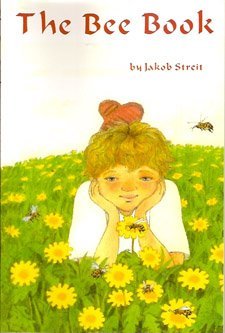
Description:
L’Abbé Eloi François Émile Warré was born on 9 March 1867 at Grébault-Mesnil in the Somme département. He was ordained a priest on 19 September 1891 — Amiens diocese — and became the parish priest of Mérélessart (Somme) in 1897 then of Martainneville (Somme) in 1904. He disappeared from the records in 1916 subsequently to reappear at Saint-Symphorien (Indre-et-Loire) to devote himself exclusively to beekeeping. He died at Tours on 20 April 1951. Abbé Warré developed The People’s Hive based on his studies of 350 hives of different systems that existed at his time as well as of the natural habits of the bee. To publish his findings, he wrote several books: La santé ou les Meilleurs traitements de toutes les maladies (Health or better treatments for all illnesses), Le Miel, ses propriétés et ses usages (Honey its properties and applications), La Santé, manuel-guide des malades et des bien-portants (Health, a manual for the ill and the well) –1912 — and by far the most important L’Apiculture pour Tous (Beekeeping for All) whose twelfth and last edition is dated 1948.
“Before leaving, I would like, dear bees, to carve my name on these leaves, blessed shrub that has taken all its sap from around your dwelling place. In its shade, I have rested from my weariness, have healed my wounds. Its horizon satisfies my desires for there I can see the heavens. Its solitude is more gentle than deep. Your friends are visiting it. You enliven it with your singing. And because you do not die, dear bees, you will sing again and for ever, in the surrounding foliage, where my spirit will rest. Thank you. E.Warré”
“… At a convenient time we raised queens and supplied swarms. But one evening, an order for 12 swarms was cancelled. I had empty hives to put them in, but I had only enough foundation for two hives. I settled for putting starters in the others as raw wax at the top of the frames, helped greatly by my knife in putting these starters in order. And I noticed that on these starters the bees constructed their combs as quickly as those on foundation and that these combs were more regular. I thus decided to continue to use only starters of raw wax and I have never come to regret it. The People’s Hive was thus designed. And if small hives with frames economise on winter stores and facilitate the development of brood in spring, a hive with fixed comb will do it better because its volume is smaller: 36 litres instead of 44. We therefore designed the People’s Hive with fixed comb. Now we noticed that the People’s Hive with fixed combs saved an extra 3 kg of stores compared with the People’s Hive with frames. We thus had two hives: the People’s Hive with fixed comb, a perfect hive, but not convenient on a commercial scale because it does not allow the extractor to be used, and the People’s Hive with frames, very superior to modern hives, inferior however to the People’s Hive with fixed combs, but convenient for commercial use…. “
Other Books From - Beekeeping
About the author
[books_gallery_author author="Abbé Warré"]Back

 CoolAustralia.org Love Food? Love Bees! Curriculum Resources
CoolAustralia.org Love Food? Love Bees! Curriculum Resources  National Best Management Practice for Beekeeping in the Australian Environment
National Best Management Practice for Beekeeping in the Australian Environment  Kids Treats
Kids Treats  The Bee Book
The Bee Book  So you want to sell bee products
So you want to sell bee products  The Sydney Royal National Honey Schedule
The Sydney Royal National Honey Schedule